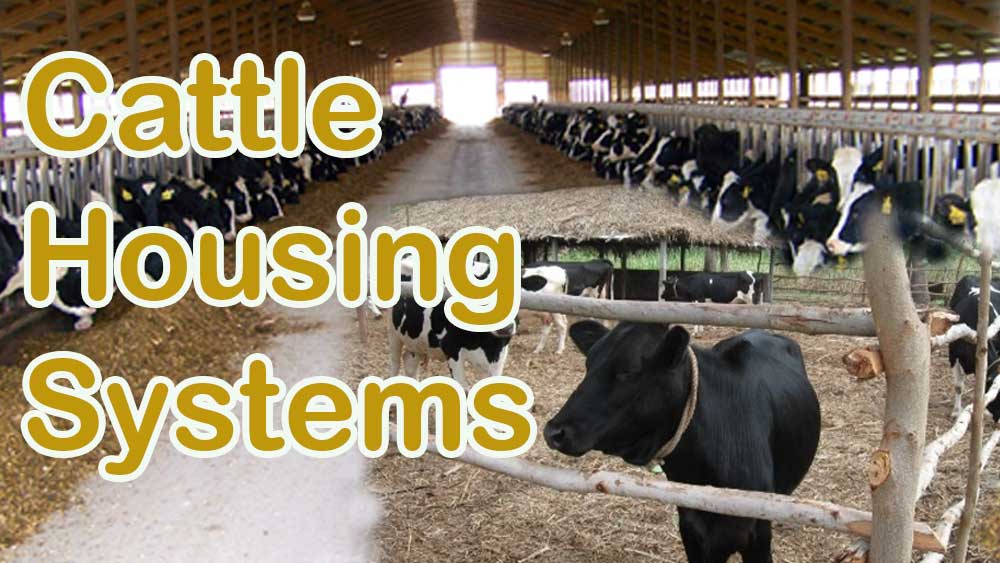In a cattle farm providing the systematic housing system is very essential if you need to have healthy and high milk giving cows. A proper management of the cattle shed should do continuously to have a higher economic yield. The care must give to each and every individual cattle in the housing system. The housing system should establish in comfortable surroundings.
Factors to consider when designing housing system.
The sheds should be in an easily accessible place and it is better if you can locate the shed somewhat in higher elevation if possible. Because then the drainage system would function efficiently. No water will collect during the rainy seasons and you can have a better drainage system to remove the wastes also.
It should ventilate properly with clean air. But should block the hot or cold wind also. Also, there should be enough space of the yard also where the cattle feel very comfortable in the shed.
Exposure to the sunlight is also important. So, the care must take to expose the shed to enough sunlight.
The area should be well clean, dry and comfortable.
It is better if you can locate your cattle sheds in easily accessible places to clean water, food, current and other needed facilities.
There should be enough availability and access to feed and water. The feeding area should be with enough space and should be very clean. Sufficient shade also should be there in the grazing areas.
All these factors effect on the health and productivity of the cattle. So, when rearing cattle, it is a must to pay attention to these factors too. Adequate labor and regular inspection of the shed is necessary to maintain it with the required conditions.
Types of housing systems
There are mainly two type of housing systems you can use when rearing cattle. They are:
- Tie-up housing
- Loose housing
Tie-up housing
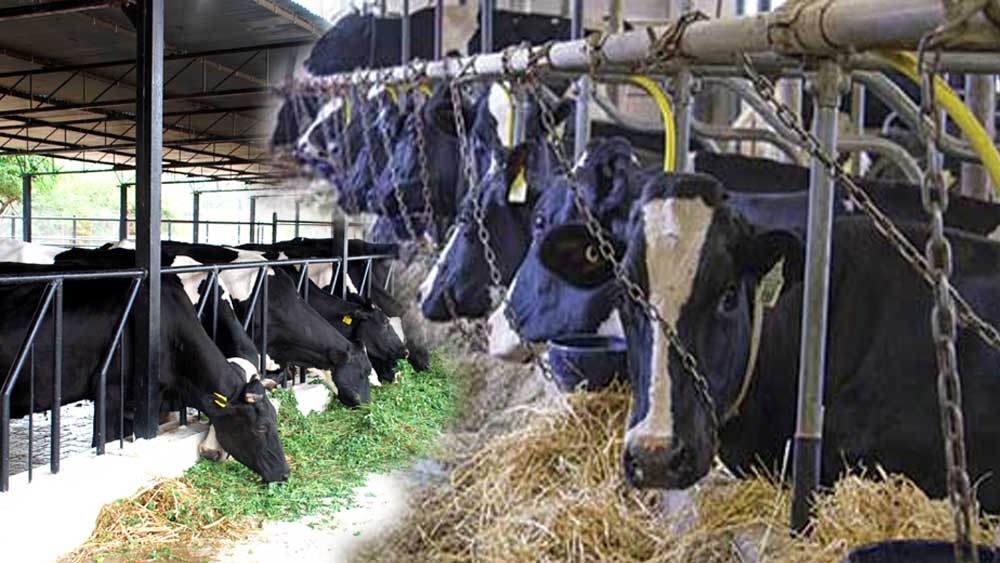
- In this type of housing system, you can see different partitions separated for the individual cow. They are stalls and each cow ties to the stall.
- The sizes of the stalls differ with the sizes of the cattle. The feeds and water provide to the stall.
- The milking is also doing in the stall itself.
- There is a gutter to collect the manure.
- The stalls in the shed can arranged as:
- Single row – this is possible when the number of cows is lesser.
- Double rows – use when the herd size is large.
- Each method has their own advantages and disadvantages.
- Double row arrangement can be classified in to two types. They are:
- Head-to-head type
- Tail to tail type
Head-to-head type
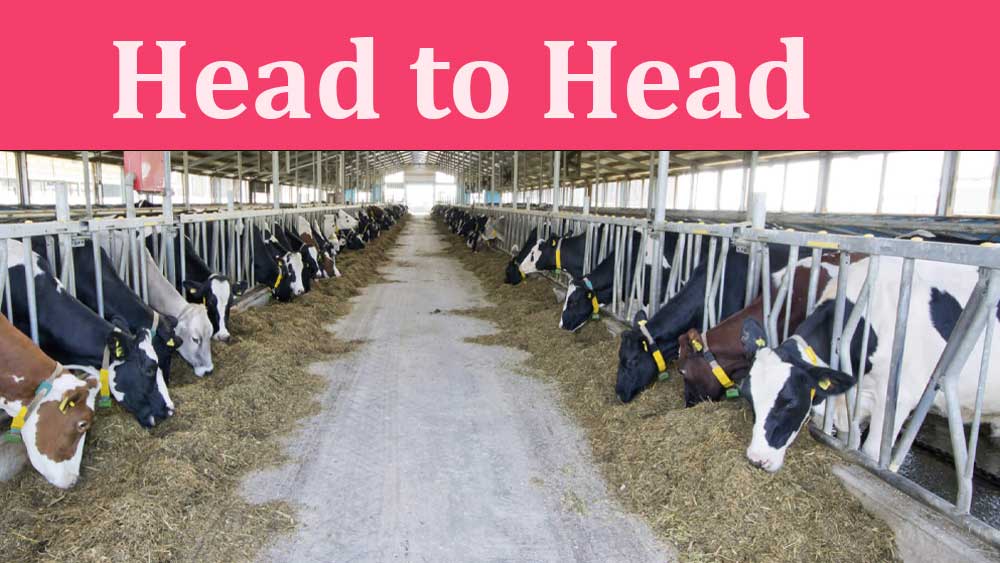
- In this type the stalls are designing in a way that the cows face each other.
- There is a common feeding alley for the two rows of stalls making it easier to feed them.
- There are two milking alleys here to collect milk.
Tail-to-tail type
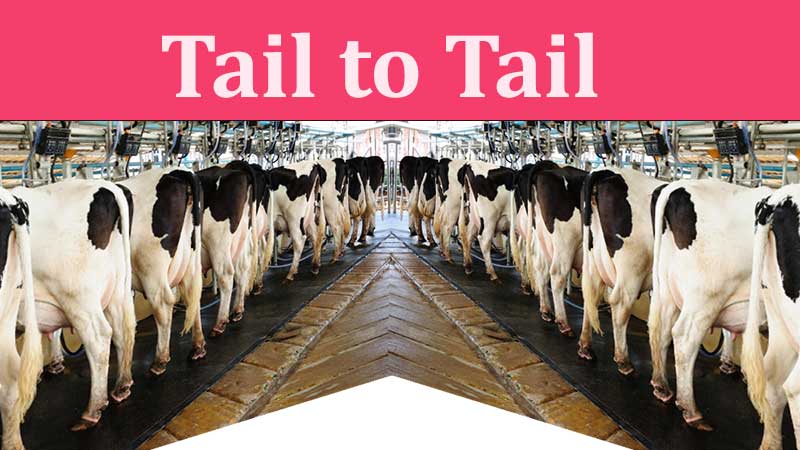
- The cows face outside the barn.
- Should provide two feeding alleys separately.
- There is only one central milking alley.
Loose housing
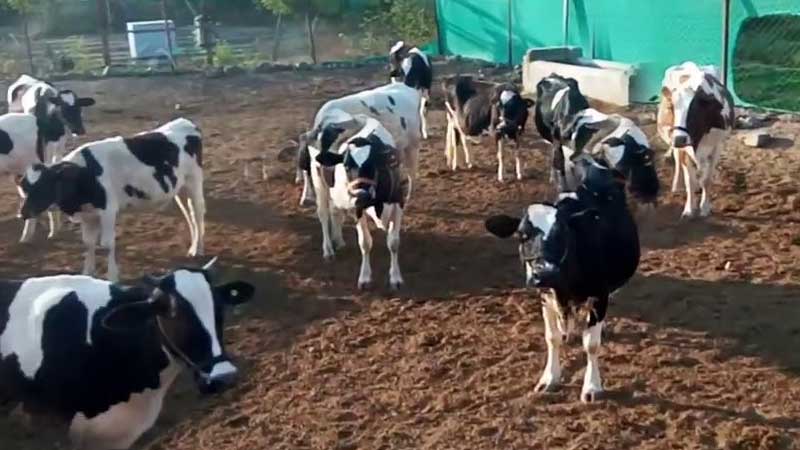
- In here the cows are not tie up. They can move freely unless for milking purpose. Best for cow farming.
- There is a loafing and lying area. A feeding area is also here.
- There is a separate place for milking.
Advantages of loose housing system
- In here the animals feel free. Therefore, they are stress free animals giving better production.
- Low cost for the construction.
- No need to have a separate time for exercising.
- Less bedding needed.
- The manure removal also limited.
- Can easily detect the animals at heat.
- In general, this is the best housing system than the tie- up housing system.
- But, in here the transmission of the diseases among the cattle are higher compared to the tie-up housing system.
